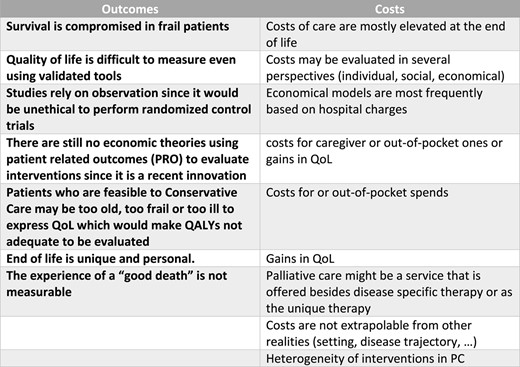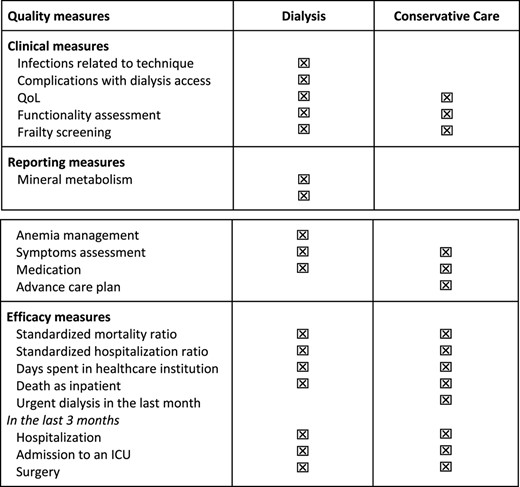-
PDF
- Split View
-
Views
-
Cite
Cite
Ana Farinha, Pedro Barata, #950 Conservative care management in chronic kidney disease: a value for the money?, Nephrology Dialysis Transplantation, Volume 39, Issue Supplement_1, May 2024, gfae069–0602–950, https://doi.org/10.1093/ndt/gfae069.602
Close - Share Icon Share
Abstract
In Portugal, in 2021 the Directorate General of Health proposed the implementation of conservative care management (or kidney palliative care) as an option to handle frail Chronic Kidney Disease (CKD) patients or those who opt not to proceed to Kidney Replacement Therapy Options (KRT). A guideline regulated the clinical framework for this proposal but its socioeconomic evaluation and subsequent reimbursement has not been established. This has become a barrier to its application by public and private providers. This work intends to evaluate the limitations of costs and outcomes analysis in context of end-of-life care in CKD patients and propose indicators to compare cost effectiveness in dialysis and conservative care management.
A narrative review from the literature have been made to evaluate epidemiological, social, individual and economic burden of ESKD and its treatment modalities. A reflection has been made on the benefits of Conservative Care (CC) and the limitations to evaluate cost effectiveness for this option compared to dialysis.
Cost-effectiveness analysis is a method of comparing costs and effects of two or more alternatives in health or social care interventions to an outcome. Conceptual models of cost-effectiveness analysis evaluate outcomes compared to costs. Quality-adjusted life-years (QALYs) is a popular measure of outcome, but its use is problematic in ESKD. Costs of care are mostly elevated at the end of life and the way they are calculated is also debatable (Fig. 1). Some indicators may be used to compare CC and dialysis (Fig. 2).
The health policies should guarantee access to the health care, with quality, effectiveness and safety in the provision of services with efficiency but at the same time to assure financial sustainability and patients’ satisfaction. For some patients CC may embody an option that represents value for the money. To prove this reality, a cost-effectiveness evaluation must be implemented based on pre-specified indicators that override the limitations of this analysis in this specific context.


Indicators to compare dialysis and CC to evaluate cost-effectiveness of each modality in frail patients.
- hemodialysis
- end-of-life care
- kidney failure, chronic
- cost effectiveness
- frail elderly
- health policy
- patient care management
- portugal
- quality-adjusted life years
- reimbursement mechanisms
- renal replacement therapy
- safety
- socioeconomic factors
- terminally ill
- dialysis procedure
- economics
- kidney
- palliative care
- cost-effectiveness analysis
- outcome measures
- narrative review
- money
- chief complaint





Comments